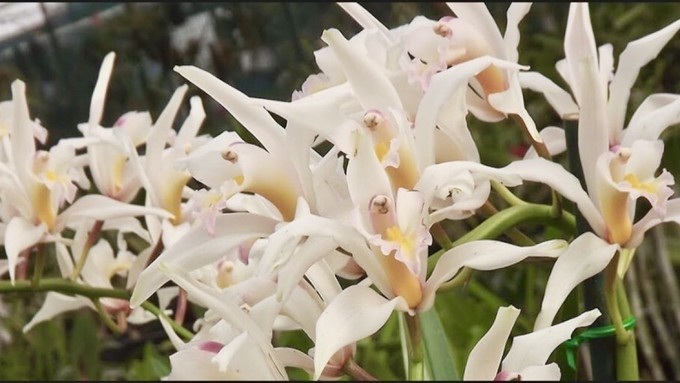
Show and sale features Sacramento Valley's best outdoor orchids

Cymbidiums thrive in Sacramento’s Mediterranean climate. Photo courtesy Sacramento Valley Cymbidium Society
These orchids love Sacramento – and we love them right back.
Cymbidiums, those hardy outdoor orchids with spectacular blooms, are back in season. See the best of the best at the annual Sacramento Valley Cymbidium Society show and sale on Saturday, March 25, at Shepard Center in McKinley Park. Admission and parking are free.
Open from 10 a.m. to 4 p.m., this flower-filled event will feature displays of plants grown by club members, competing for best blooms.
Take some orchids home, too. The sale includes cymbidiums in all sizes from miniature to large standard, in a wide range of colors and varieties.
With a tropical look and long-lasting blooms, cymbidiums thrive in Sacramento’s Mediterranean climate and can live for many years outdoors, even in winter (with some protection). Get advice from these local experts on how to get these orchids to rebloom year after year.
As an added bonus, learn how to repot cymbidiums. Club members will demonstrate during the event.
Shepard Garden and Arts Center is located at 3330 McKinley Blvd., Sacramento.
For more details: www.sgaac.org, https://www.facebook.com/sacramentocymbidiums or email SacCymSoc@yahoo.com.
Comments
0 comments have been posted.Sacramento Digs Gardening to your inbox.
Sites We Like
Garden Checklist for week of July 21
Your garden needs you!
* Keep your vegetable garden watered, mulched and weeded. Water before 8 a.m. to reduce the chance of fungal infection and to conserve moisture.
* Feed vegetable plants bone meal, rock phosphate or other fertilizers high in phosphate to stimulate more blooms and fruiting. (But wait until daily high temperatures drop out of the 100s.)
* Don’t let tomatoes wilt or dry out completely. Give tomatoes a deep watering two to three times a week.
* Harvest vegetables promptly to encourage plants to produce more. Squash especially tends to grow rapidly in hot weather. Keep an eye on zucchini.
* Pinch back chrysanthemums for bushy plants and more flowers in September.
* Remove spent flowers from roses, daylilies and other bloomers as they finish flowering.
* Pinch off blooms from basil so the plant will grow more leaves.
* Cut back lavender after flowering to promote a second bloom.
* It's not too late to add a splash of color. Plant petunias, snapdragons, zinnias and marigolds.
* From seed, plant corn, pumpkins, radishes, winter squash and sunflowers.